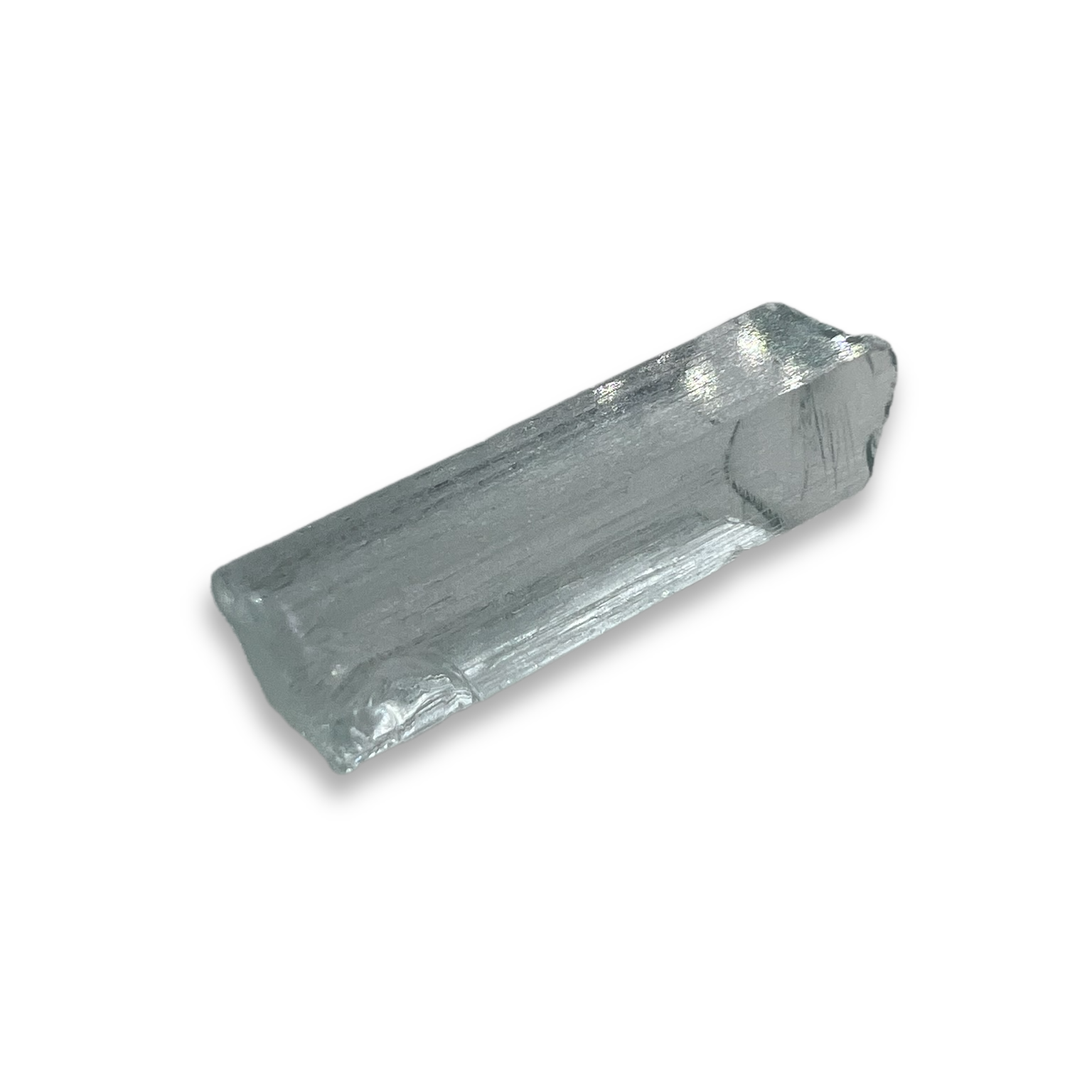

Rough Aquamarine from Pakistan - 15.8 CTW
Tax excluded. Shipping calculated at checkout
- Clarity - Eyeclean
- Dimensions - 27.6 x 9.0 x 7.4 mm
- Weight - 15.8 CTW
- Treatment - None
- Origin - Pakistan
- Comments - None
More Information about Aquamarine
Aquamarine is a pastel greenish-blue variety of the mineral beryl and owes its color to the presence of iron impurities. Its name is derived from the Latin words for water (aqua) and sea (marine). Crystals form in large hexagonal prisms. In ancient times, it was believed that sailors wearing aquamarine pendants would be protected from the perils of the sea. The stone symbolized happiness and eternal youth. It was viewed in Christian symbolism to bring moderation and control of passions to its owner.
| Name | Aquamarine |
| Is a Variety of | Beryl |
| Refractive Index | 1.567-1.590 |
| Colors | Blueish green, blue-green, greenish blue, blue. |
| Hardness | 7.5-8 |
| Wearability | Excellent |
| Enhancements | May be heat treated to remove green tint. Very common, undetectable. |
| Typical Treatments | Heat Treatment |
| Etymology | From the Latin aqua marina for "sea water," in allusion to the color. |
| Inclusions | Long, hollow tubes, negative crystals, chrysanthemums. 2-phase and 3-phase inclusions. |
Enhancements
No known gem treatments or enhancements.
Sources
Brazil, Nigeria, Madagascar, and Tanzania are major sources of aquamarine.
Care
Although aquamarines require no special care and can resist scratching from everyday wear very well, cut-corner designs and protective settings can still help them resist chipping and breaking.
However, inclusions within aquamarines may not react well to mechanical cleaning techniques like ultrasound or steam, increasing the risk of shattering. Therefore, consult with a gemologist first to determine if your gems can withstand these cleaning methods. Of course, you can always use a soft brush, mild detergent, and warm water to clean your aquamarines safely.
Choose options


Tax excluded. Shipping calculated at checkout

